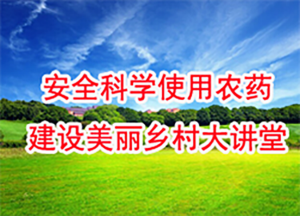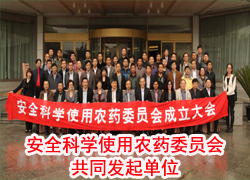
China Released the Most Rigorous National Standards on Maximum Pesticide Residues
責(zé)任編輯:Cong Lv 來源:China Crop Protection Industry Association 日期:2014-04-02
On March 28th, 2014, China’s Ministry of Agriculture and National Health and Family Planning Commission of China jointly released the most rigorous national standard on maximum residue limits for pesticides in food, raising the existing 2,293 maximum residue limits to 3,650, an increase of 1,357 limits. The new standard will come into effect on August 1st 2014, and the old one will be repealed.
The National Food Safety Standards on Maximum Residue Limits (MRLs) for Pesticides in Foods (GB2763-2012) covers 3,650 residue limits for 387 pesticides in 284 kinds (categories) of agricultural products and foods. Compared with the standard released in 2012, there is an increase of 65 pesticides, 43 kinds (categories) of agricultural products and foods and 1,357 residue limits in the new standard.
In order to solve the problem of excessive pesticide residues in vegetables, fruits, tea leaves and other fresh agricultural products and food, the new standard focuses on the maximum residue limits for pesticides in fresh agricultural products, specifying 2,495 residue limits for 115 kinds (categories) of vegetables and 85 kinds (categories) of fruits, an increase of 904 new limits compared with the 2012 version. The increase of the maximum pesticide limits on vegetables and fruits accounts for 67% of the total increase, of which, there is an increase of 473 limits for fruits and 431 limits for vegetables (including edible fungus).
Currently, there are about 350 pesticides that are commonly used in China, and the new standard set maximum residue limits for 387 kinds of pesticide, which almost covers all the commonly used pesticides. The coverage will be further expanded in the future.
The new standard set maximum residue limits for pesticides in 284 kinds (categories) agricultural products and food, covering 12 main categories, including vegetables, fruit, grain, oil plants and fat, sugar crops, beverages, seasoning, nut, edible fungus, mammalian meat, egg, bird viscus and meat. The new standard set maximum residue limits for pesticide in primary products such as juice, preserved fruit and dried fruit for the first time, which basically covers food categories of regular consumption.
In the new standard, there are 1,999 limits which are also specified by Codex Alimentarius Commission (CAC). Of the 1,999 national standard limits, 1,811 limits are equal to or more rigorous than those specified by CAC’s standard, accounting for 90.6% of the total. During the standard formulation process, the limit standards were reported to all WTO members who gave their appraisals on the limits. In response to WTO members’ questions, the formulation team made scientific and convincing explanations. The national limit standard is basically in line with the international standard.
To ensure a scientific and practical standard, the standard formulation team obtained the pesticide residue limits based on toxicological data, pesticide residue field trial data, dietary consumption data and monitoring data of domestic agricultural market. The standard was finally formulated after the team carried out scientific risk assessment and solicited the opinions of the public, agricultural production and import & export enterprises, and industry associations and sectors.
According to the authority, as the only mandatory national standards for maximum residue limits for pesticide in food, the new standard strives to ensure "safety for tongue" by offering legal technical basis with the most rigorous standards, the most stringent regulations, the most severe punishment and the most serious accountability system.
中國農(nóng)藥工業(yè)網(wǎng) 版權(quán)所有
地址:北京市朝陽區(qū)農(nóng)展館南里通廣大廈7層
電話:010-84885233 京公網(wǎng)安備11010502025163










